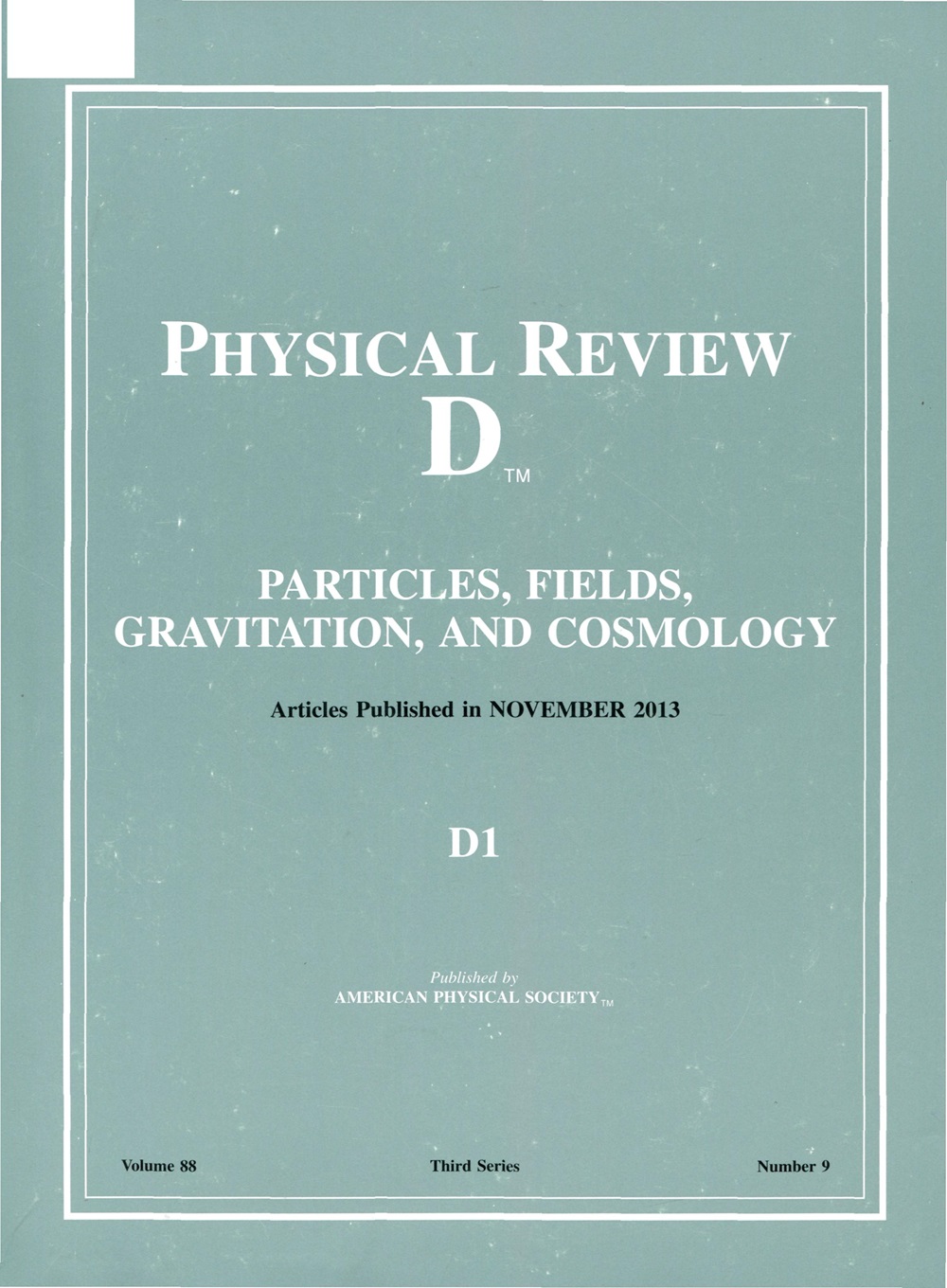Center vortex evidence for a second finite-temperature QCD transition
IF 5
2区 物理与天体物理
Q1 Physics and Astronomy
引用次数: 0
Abstract
Evidence for the existence of a second finite-temperature transition in quantum chromodynamics (QCD) is obtained through the study of center vortex geometry and its evolution with temperature. The dynamical anisotropic ensembles of the Fastsum Collaboration are utilized to conduct a comprehensive analysis at eight temperatures beyond the established chiral transition. Visualizations of the center vortex structure in temporal and spatial slices of the lattice reveal that vortex percolation persists through the chiral transition and ceases at a temperature that is approximately twice the chiral transition temperature Tc. This implies that confinement is retained through temperatures up to求助全文
约1分钟内获得全文
求助全文
来源期刊

Physical Review D
物理-天文与天体物理
CiteScore
9.20
自引率
36.00%
发文量
0
审稿时长
2 months
期刊介绍:
Physical Review D (PRD) is a leading journal in elementary particle physics, field theory, gravitation, and cosmology and is one of the top-cited journals in high-energy physics.
PRD covers experimental and theoretical results in all aspects of particle physics, field theory, gravitation and cosmology, including:
Particle physics experiments,
Electroweak interactions,
Strong interactions,
Lattice field theories, lattice QCD,
Beyond the standard model physics,
Phenomenological aspects of field theory, general methods,
Gravity, cosmology, cosmic rays,
Astrophysics and astroparticle physics,
General relativity,
Formal aspects of field theory, field theory in curved space,
String theory, quantum gravity, gauge/gravity duality.
 求助内容:
求助内容: 应助结果提醒方式:
应助结果提醒方式:


